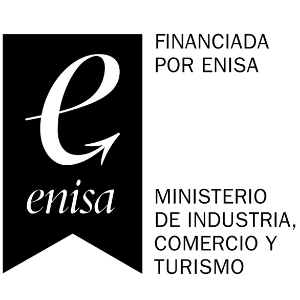Cash forecasting is a critical process in short- and long-term planning for many companies. According to data from the Association for Financial Professionals, cash planning is the number one priority for 68% of treasury managers.
In this article we explain what it is, what steps you need to take to create it and why you should consider automating cash forecasting.
Cash forecasting: what it is.
Cash forecasting (also called treasury plan, cash flow or cash flow forecasting) is the process of estimating a company’s incoming and outgoing cash flow for a specific period of time.
Having an accurate cash flow plan provides information that helps to avoid a lack of liquidity that could affect the business, or conversely a surplus of cash that could be used more efficiently.
The importance of cash forecasting in companies.
Having a forecast of the cash you will have available is essential to manage payments, collections or investment capacity and improve the financial health of the company, either to:
- Reduce the company’s debt: ensuring that you have the cash you need to pay debts and associated expenses on time.
- Reduce the risk of indebtedness: ensuring that you only acquire debts that you will be able to pay.
- Increase predictability in the growth of the company: allowing to plan investments effectively.
This will require estimating collections and payments in each period, something that at first glance seems simple but becomes more complicated as organizations grow.
How to make a good cash flow forecast for your company.
Cash forecasting is a task that usually falls to corporate finance teams but requires inputs from different sources, especially in large organizations.
How cash flow forecasting is performed can vary between organizations depending on their financial objectives, available information, etc. On this basis, let’s take a look at the steps involved in developing a good cash flow forecast for a company.
Define your objectives for the cash flow forecast.
If you want the cash flow plan to be useful, it must be aligned with the needs of your organization. Some possibilities in this regard are:
- Debt reduction
- Short-term liquidity planning
- Growth planning
- Improve liquidity level for annual closing
- Etc.
For example, the forecast that will be needed by a company that must make weekly debt payments will not be the same as that needed by an organization that wants to forecast the closing numbers for each quarter.
Set the period for the cash forecast.
Once the objective has been determined, the next step is to set the period to be covered by the cash flow plan.
To make this decision you need to consider what information you have, as it becomes less accurate or unavailable as you look further into the future. Therefore, a balance must be struck between a period that is interesting for decision making but also has quality information on which to base the forecast.
In order to do that, you have to take into account what information you have, as it loses accuracy or becomes unavailable as you look further into the future. Therefore, a balance must be struck between a period that is interesting for decision making but also has quality information on which to base the forecast.
Some examples of cash forecasting applicable to most companies might be:
- Short-term cash forecasting: between 2 and 8 weeks ahead, provides reliable information on a daily level for short-term decision making and daily planning of expenses and revenues.
- Medium-term cash flow forecasts: up to 3-6 months ahead, ideal for debt reduction planning, liquidity risk management, key date management, etc.
- Long-term cash forecasting: from 3-6 months, useful for capital projects, long-term growth strategies, annual budgeting, etc.
Choose a cash forecasting method.
Depending on the time frame and information available you can use direct methods (based on actual cash flow data) or indirect methods (based on balance sheets, project forecasts, etc.).
The direct method provides a more accurate forecast but is limited to the short term. As the time frame lengthens, forecasting becomes more complicated as it is not based as much on actual events (current cash, invoices issued and received, etc.), hence it is estimated indirectly.
Gather all the information you need for cash forecasting.
The data needed to prepare the cash flow plan is collected from bank accounts and/or your organization’s management software (ERP, CRM, etc.). Depending on the management of each company there may be other sources of data.
All the information to be collected includes:
- Current cash position and other current assets
- Plan of investments to be made
- Breakdown of debts
- Company’s income and expenses
- Analysis of non-current assets
- Etc.
This is often one of the most sensitive parts of the cash forecasting process. It is common that the sources of information are not centralized, so the finance team must spend a lot of time manually collecting this information.
Unifying all this information in a single repository (financial software) makes creating the forecast a much simpler process as much of the work, such as information gathering, could be done automatically.
Reasons to automate a company’s cash forecasting.
Large companies have to invest a lot of resources in this type of planning, but most of those resources go to low-value tasks, such as data collection or the preparation of intermediate Excels prior to the final reports.
Automating these activities allows finance teams and their managers to spend time on higher-value tasks, such as simulating “what if” scenarios, assessing transaction risks based on more reliable data, and generally analyzing and improving the company’s cash position.
Automating all or part of the process can save a large part of the effort required to obtain the cash forecast. This is especially important in large organizations where there are accounts from different banks, several business units, various currencies, etc.
At Holistic Data Solutions we believe that in order to perform a good cash flow forecast it is essential to have a specific software that takes care of the basic operations such as collecting the data, obtaining the figures and monitoring the cash flow status so that current information is always available for decision making. This allows companies to improve their efficiency and reduce risk in their operations.
We help you with your company’s cash flow forecasting.
As we have already mentioned, the total or partial automation of cash forecasting offers many advantages, but in order to do it correctly, it is a good idea to rely on specialists in this type of implementations.
At Holistic Data Solutions we are experts in planning projects, so we can help you create an efficient cash forecasting system for your company. If you would like to talk to us about it, just contact us.
Related Articles
In a context like the current one where financial instability and market volatility are so present, it is normal that [...]
Board International was founded in the 1990s with the aim of being a Self-Service Analysis and Reporting, which goes through [...]
Time and money. If we were to carry out a market survey and ask finance directors, entrepreneurs or heads of [...]















